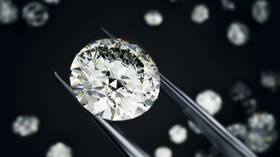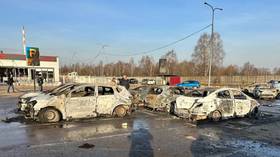West seeking ways to target Russian diamonds – Bloomberg

The European Union and G7 are looking into ways of hunting down Russian diamonds across borders and want to introduce a “watertight” tracking system that would restrict their trade, Bloomberg reported on Sunday, citing sources.
Russia’s diamond trade has so far avoided sanctions due to resistance from major importers of gems such as Belgium, which is home to the world’s biggest diamond trading hub in Antwerp. Brussels has repeatedly blocked the EU’s embargo plans, warning that the move could cost thousands of jobs.
Around 85% of the world’s rough diamonds pass through Antwerp on their way to consumers, with an estimated 10,000 people relying on the trade for employment, according to official numbers.
The Belgian authorities also argue that imposing sanctions without building a global system to track the gems would be pointless, as trade would shift to other markets such as India and China.
A diamond’s origin can only be traced at the start of the supply chain when the Kimberley Process certificate, designed to prevent the sale of so-called ‘blood diamonds’, is issued for a rough gem. Cut and polished stones which later flow through other markets and trading houses with ‘mixed origin’ documentation are enormously difficult to track.
People with knowledge of the G7 and EU discussions told Bloomberg that a solution is not imminent, because “tracing polished diamonds in a global market is extremely complicated.”
Meanwhile, after the upcoming tenth round of sanctions reignited debate in the EU over a potential ban, the latest data shows that Russian diamond sales in the bloc increased after the start of Moscow’s military operation in Ukraine last February.
“The numbers – which have not yet been made public – reveal that… Russia sharply increased diamond exports to the EU (which includes Antwerp, Belgium),” Rob Bates of JCK Online wrote.
In the second quarter of 2022, Russian rough diamond exports surged to $1.11 billion from $1.01 billion in the first quarter of the year, and from $1.09 billion in the second quarter of 2021, according to a Kimberley Process report. Bates added that “no data was available for the third and fourth quarters of 2022, though preliminary third-quarter numbers also show an increase.”
The US has sanctioned Russian mining giant Alrosa, which is the world’s largest diamond producer and accounts for 30% of the $80 billion global trade in rough diamonds. Washington has banned the importation of Russian rough diamonds, but still imports gems if they have been substantially altered in other countries.
For more stories on economy & finance visit RT's business section














